A Dance of Lights: Awed by the Aurora Borealis
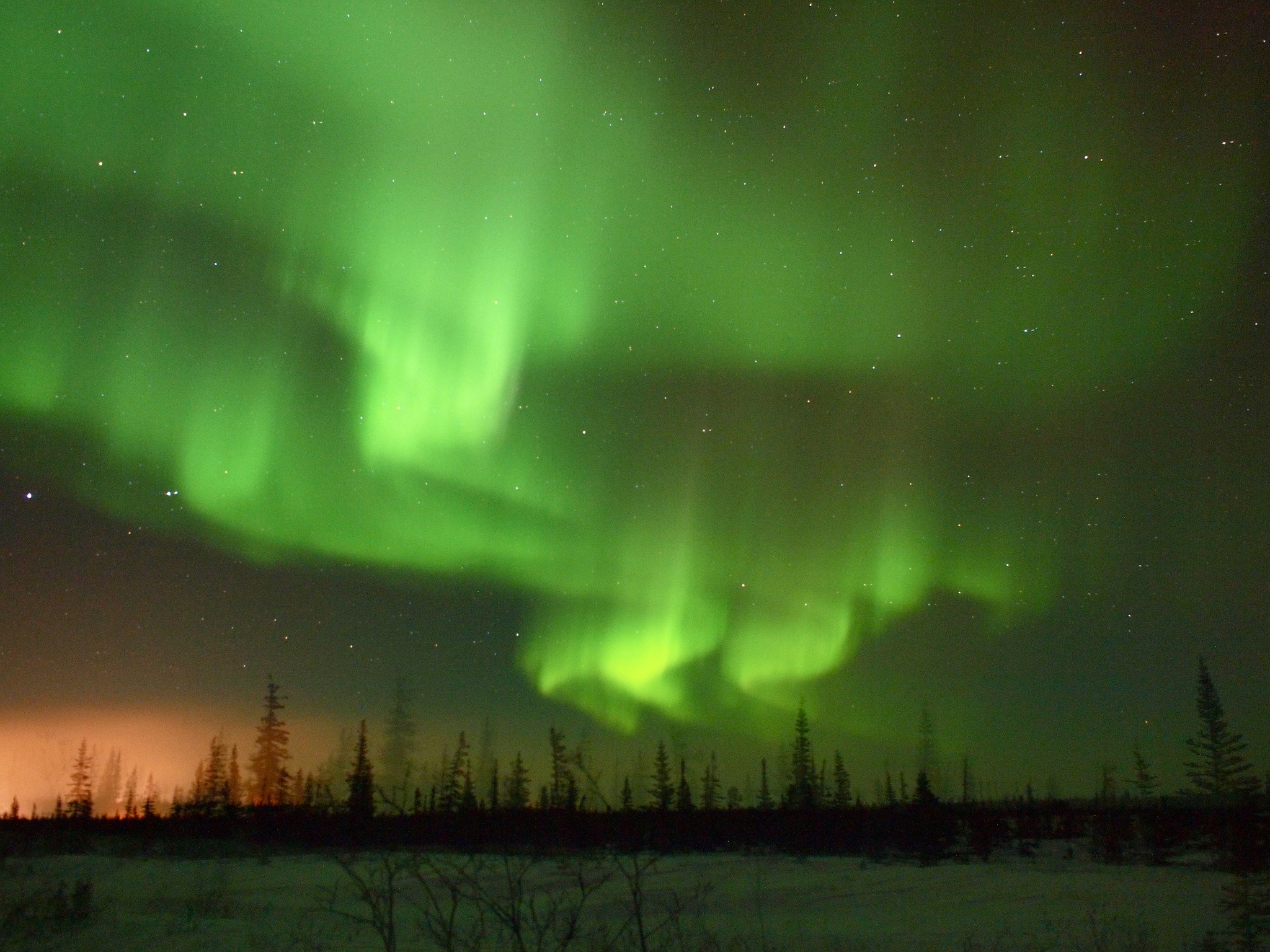
“The sight filled the northern sky; the immensity of it was scarcely conceivable. As if from Heaven itself, great curtains of delicate light hung and trembled. Pale green and rose-pink, and as transparent as the most fragile fabric, and at the bottom edge a profound and fiery crimson like the fires of Hell, they swung and shimmered loosely with more grace than the most skillful dancer. Lyra thought she could even hear them: a vast distant whispering swish. In the evanescent delicacy she felt something as profound as she’d felt close to the bear. She was moved by it; it was so beautiful it was almost holy; she felt tears prick her eyes, and the tears splintered the light even further into prismatic rainbows.” (– Philip Pullman, The Golden Compass)
I can still remember the first time I read the above passage. I was 15 and in ninth grade; not yet bitten by the travel bug, but nevertheless inexplicably drawn to the ethereal image of the Northern Lights flickering over the Arctic that Philip Pullman painted so vividly in his “Dark Materials” fantasy trilogy.
The story of Lyra Balacqua and her quest to discover “Dust” is not one known to many outside the realm of fantasy fans. But the Aurora borealis that Pullman (through Lyra) waxed on so poetically about? Yeah, just about everybody has heard of that.
In Pullman's fantastical world, the Northern Lights serve as a gateway into an alternate universe. In reality, the dancing green and purple lights are caused by charged particles given off by the sun during solar storms interacting with the gases in earth's atmosphere. … (Yeah, the gateway into an alternate universe sounds better to me, too.)
Up until about 50 or 60 years ago, though, very little was known about the aurora and what caused it. Some explained the glow in the sky as light reflecting off the ice caps, due to the location of the Lights. Nevermind the fact that the polar regions get little to no sunlight in the winter months… It wasn't until Canada began launching Black Brandt rockets from Churchill to study the sky in the 1960s that scientists began to understand just what causes the Northern Lights to appear.
Personally, I like a lot of the old myths better than the real explanation, though.
The earliest recorded sighting of the Northern Lights can be found in ancient Chinese literature, and countless native populations came up with their own explanations and beliefs about the Lights long before scientists and astronomers ever got involved.
Some of my favorite aurora-related myths include:
- The Norse used to believe the Lights to be reflections off the shields of the Valkyries, who led dead soldiers to the afterlife.
- In Southern Europe, the Northern Lights were feared and believed to be a sign that war was coming since they are so rarely seen so far south.
- The Alaskan Inuits, too, viewed the aurora as dangerous, and would wave sharp knives and throw dog poo at the Lights to make them go away.
- In Iceland, it was believed that a pregnant women who looked that the Lights would give birth to a cross-eyed baby.
- Conversely, in Japan and China, the Northern Lights were seen as a sign of fertility, and a baby conceived beneath them would have good fortune in life.
- In Scandinavia, the lights were also good luck — the display in the sky was believed to be caused by light reflecting off herring in the sea, meaning good fishing was to be had.
- Similarly, farmers in Sweden saw the Lights as a promise of a rich harvest.
Believe it or not, there there are even references to the celestial lights in the book of Ezekial in the Old Testament.
It's no wonder, then, that seeing the Northern Lights was on my bucket list before I even HAD a bucket list.
Flashback to last week, as I'm sitting in a tricked-out Tundra Buggy (think a monster truck crossed with an RV) in Churchill, Manitoba, wearing roughly 17 layers of warm clothing and preparing to go chasing the Northern Lights for the first time in northern Canada.
This was not my first time to the rodeo, though, and so my hopes were decidedly not up. I had once before attempted to travel to a destination within the famed auroral oval — only to be met by completely cloudy skies for 5 days straight. While I was aware that Churchill is purportedly one of the top 3 places on earth to spot the Northern Lights (with anywhere between 250 and 300 days per year when the Lights are active), I did not have full confidence in the weather to cooperate.
I've learned from frequent travel that no expectations are often the best kind to have.
I was prepared, of course — camera equipment and cold weather gear at the ready — but not entirely optimistic about catching the aurora in action. After all, conditions have to be just right — clear, dark skies; crisp weather; and of course some sun particles bumping into gases in the atmosphere are all necessary. And, even then, sometimes you miss them.
But I needn't have worried. Churchill delivered.
We weren't even at our viewing spot 5 kms from the town of Churchill yet when someone pointed out the Tundra Buggy window to a sliver of green in the sky overhead. I kept my eye on this first glimmer of the Lights for the next half hour as we bounced and bumped over ice hummocks on the frozen Churchill River, praying that it wouldn't disappear.
It did not. In fact, the Lights only got brighter and more active as the next few hours passed, prompting all of us to brave temperatures of -29 C (-20 F) to attempt to capture the phenomenon on camera. Frequent squeals could be heard as even seasoned photographers successfully snapped their first shots of the sky streaked with green.
By the time a couple of hours had passed, the Lights were arcing over our heads, reaching from one horizon to the other in an undulating stream of green that moved and shifted like a living river in the sky. I could not stop smiling, and it was only the extreme cold that kept a few tears at bay.
Just before we packed it in for the night around 1:30 a.m., the aurora began “dancing” above our heads — a brilliant finale of cascading, leaping, shimmering light in all shades of greens and purples that lasted a few breathless minutes before dying out completely. Impossible to capture on film, but also impossible to ever forget.
We were thwarted by bad weather (an impending blizzard, in fact) on our second night in Churchill. This meant no Tundra Buggy ride out over the river, and no Lights. But we weren't upset about it; we knew we would have one more chance.
Our third and final full day in Churchill dawned overcast, windy, and frigid — so windy and frigid, in fact, that a few people in our group exhibited early signs of frostbite on their exposed faces after being outside for just 10 minutes. By the afternoon, our prospects of glimpsing the aurora for a second time seemed slim.
But the Universe was apparently on our side, because by that night the skies had cleared, the wind was more manageable, and the aurora forecast actually looked decent.
We decided to go for it.
Taking the Tundra Buggy out on the river was deemed too risky, so instead we piled into two Frontiers North vans and headed to a different spot outside the city. It was bitterly cold (-45 C with windchill), and again I was not optimistic. Even if we DID find the Lights, would any of us be able to withstand the cold long enough to even take a 30-second exposure?
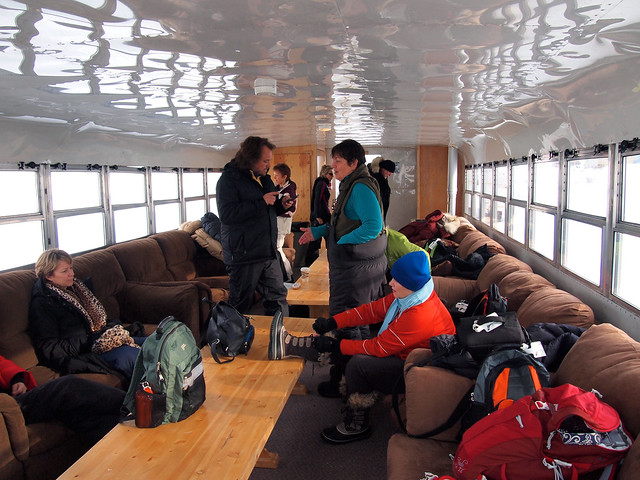
We saw no Lights for the first half hour, and simply sat in the dark vans, watching and waiting. There's an old legend that says that whistling or singing will tease the Lights into appearing, so me and another passenger started singing “This Little Light of Mine,” as much to pass the time as anything.
But, lo and behold, not 10 minutes later there they were — the Lights were back for a second show. Perhaps not entirely a legend after all…
This second night of Lights hit home for me how amazing this natural phenomenon truly is. The Lights on this night were more curtain-like than on the first, and much more colorful. Even though it's true that you can capture more color in an aurora photo than you can see with your naked eyes, we could clearly see the hints of reds and purples on this night, along with the more common green.
Despite my frozen eyebrows and the fact that I seriously thought I might lose a finger or two on this night, being able to see the aurora shimmer and fall through the sky for a second time was just as awe-inspiring as the first.
Once the aurora began to die down in the sky and only 4 of us remained to brave the weather, we headed back into town.
But I wasn't ready for the show to be over yet.
I packed up my camera, re-bundled up, and headed out to the inuksuk (a stone statue) a couple of blocks from our hotel. As I walked, the Lights came back out right above my head — so bright that they could be clearly seen above the lights of Churchill.
My camera battery only lasted for a handful of shots (it was simply too cold for it to keep working), but I didn't regret going back out at all. I was well aware of how lucky I was to be experiencing the Lights, and also aware that this could be my last chance to do so for a long time.
The whole purpose of my trip to Churchill was to learn more about the Northern Lights and try to photograph them. I'd say I was definitely successful on both counts.
And so I'll end this post with some fun facts about the Northern Lights that you might not know:
- After major solar storms, the Lights have been seen as far south as Miami, Florida and Athens, Greece.
- After said solar storms, the charged particles that cause the aurora take 2-4 days to reach Earth.
- Auroral ovals exist over both of Earth's poles, and are thought to mirror each other. Meaning when the Northern Lights are active, so are the Southern Lights.
- The Northern Lights are called the aurora borealis, while the Southern Lights are called the aurora australis.
- Earth isn't the only planet that the Northern Lights appear on — there are even auroral ovals on Saturn!
- The Lights can be active at any time of year, but usually aren't seen during the summer months because the skies simply aren't dark enough.
- The variations in color of the Lights are due to the types of gases the sun particles are colliding with, and at what altitude. The Lights can occur anywhere between 40 and 600 miles above the earth's surface. The more common green color is caused when particles encounter oxygen about 60 miles above the earth. Red is caused by oxygen, too, but at much higher altitudes. Nitrogen produces blue and purple tinges in the aurora.
- The shapes the Northern Lights make in the sky are determined by fluctuations in the earth's magnetic field.
- The Lights are usually most active after midnight.
After nearly 2,000 words gushing about this experience, I'm sure I don't need to tell you that if you ever have the chance to see the aurora, TAKE IT. But I'll say it anyway. Out of all my travel experiences so far, this one definitely stands out for me as one of my most memorable.
Is seeing the Northern Lights on YOUR bucket list?
(And, for those of you who'd like to capture images like these for yourself, check out my post on How to Photograph the Northern Lights.)
*Note: I was a guest of Travel Manitoba and Frontiers North Adventures on this trip. But, as always, all opinions are my own. (And yes, there are ALL photos that I personally took on this trip!)

Amanda Williams is the award-winning blogger behind A Dangerous Business Travel Blog. She has traveled to more than 60 countries on 6 continents from her home base in Ohio, specializing in experiential and thoughtful travel through the US, Europe, and rest of the world. Amanda only shares tips based on her personal experiences and places she's actually traveled!


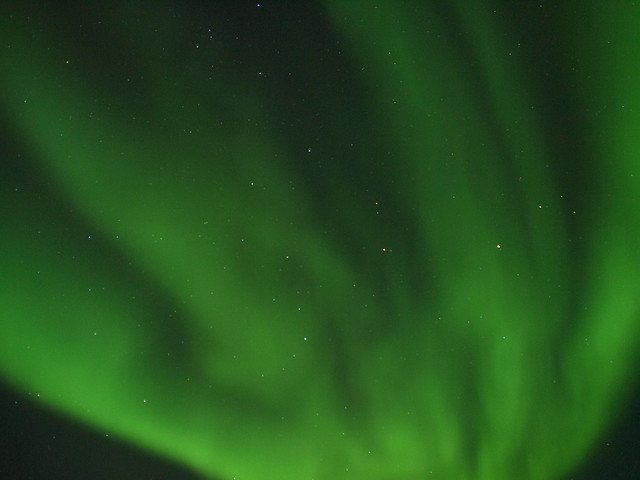
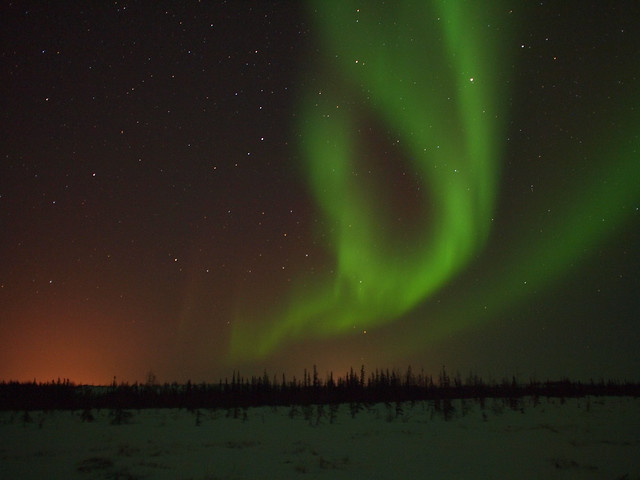

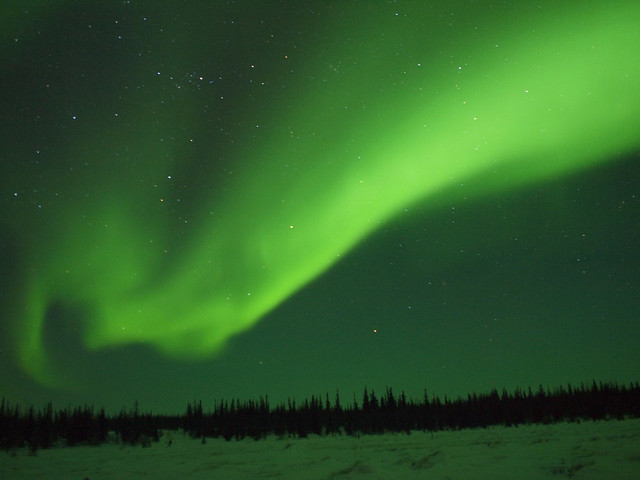
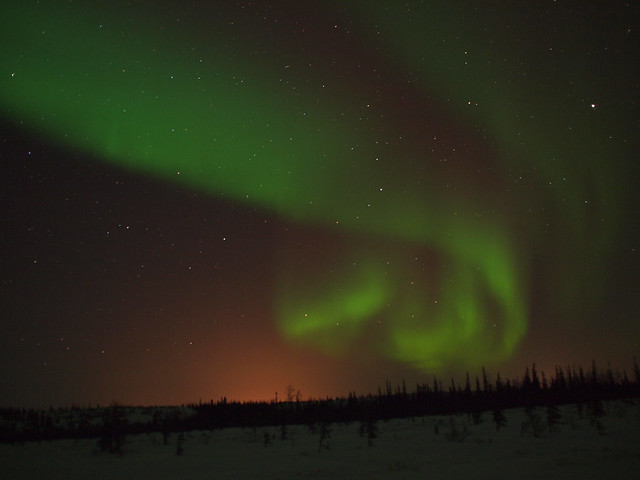

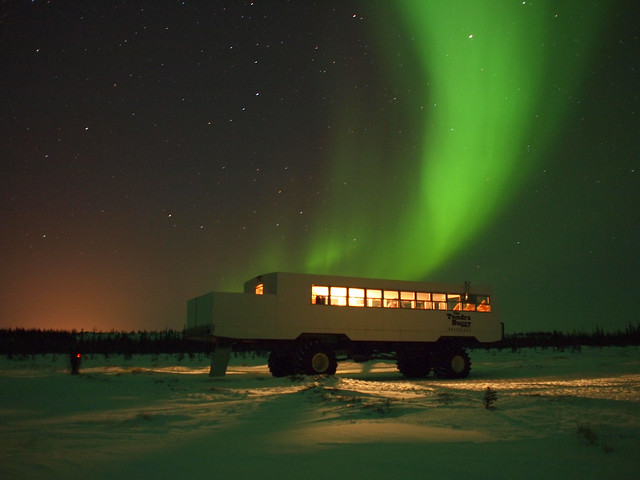
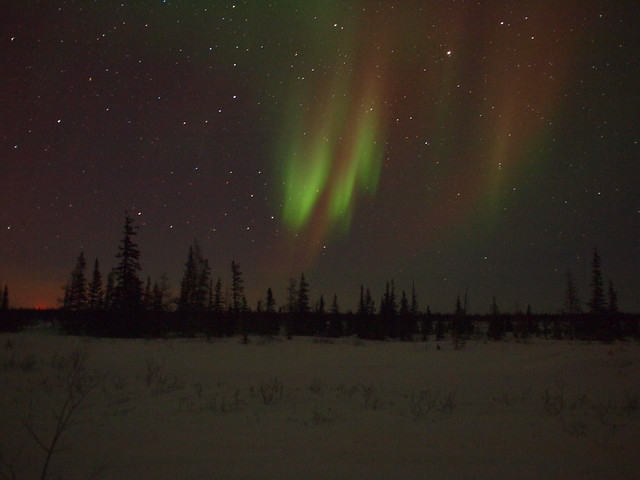
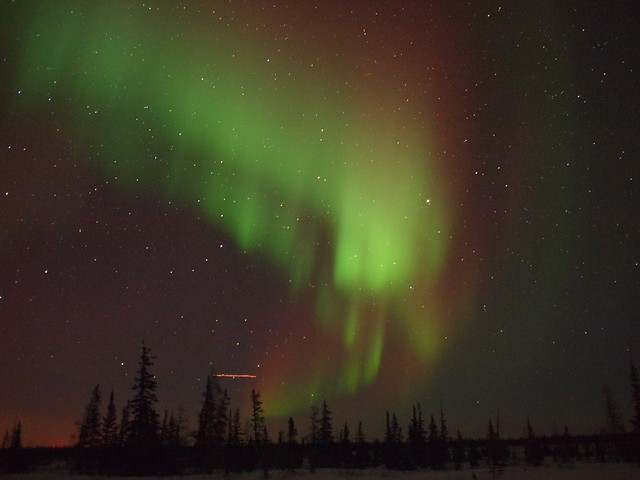
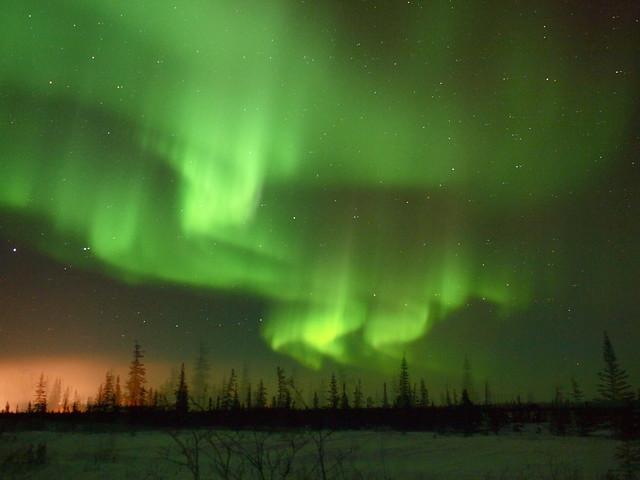
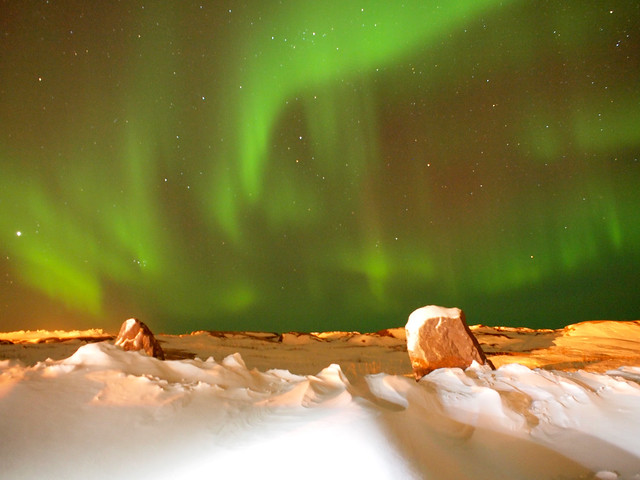
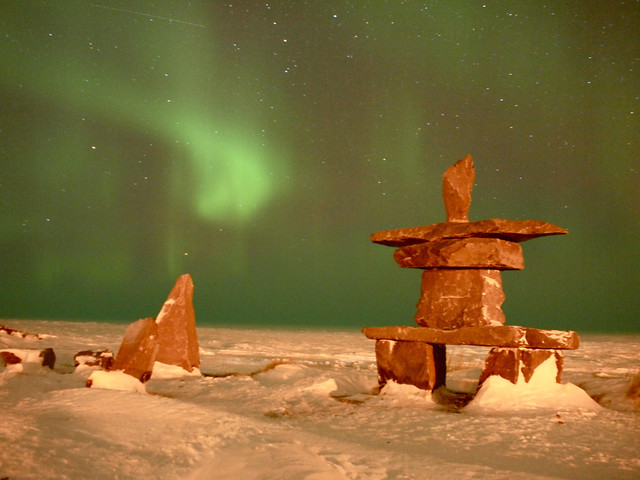
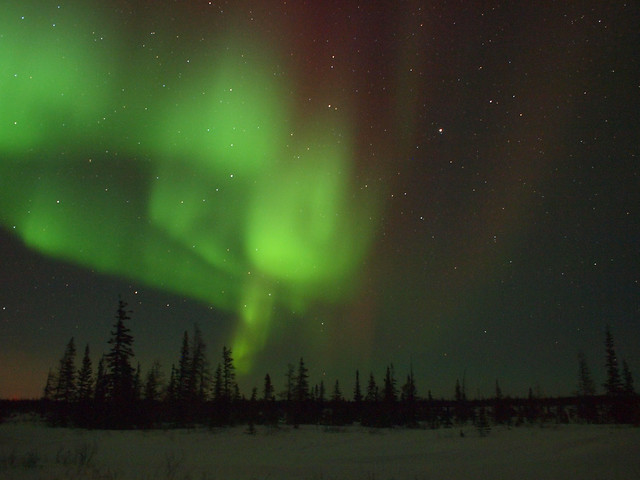









[…] been on a couple Northern Lights-seeking missions in the past few years. In Iceland. In Canada. In Arctic Norway. Not all my forays have been successful (I’ve yet to see them in Iceland […]
[…] in the winter. For one, it’s not actually as cold as many people assume. When I went to northern Manitoba to chase the Northern Lights back in 2013, nighttime temperatures were dipping down to -40 degrees. In Northern Norway, though, […]
[…] track record with the Northern Lights is a bit rocky. I saw them twice in northern Manitoba in 2013, but failed to get even a glimpse on two separate winter trips to Iceland. I knew that we were in […]
We do see the lights on occasion in the summer months. Some times they light the whole sky up. We are usually outside the city when we notice the lights but I have sometimes even seen the lights in Winnipeg. So going up North to see them would be a life time event. I see it as a present from nature that is worth seeing.
Definitely worth seeing! And a gift that I don’t think I would ever get tired of. I’m hoping to see them again in Norway next month!
[…] RELATED: A Dance of Lights: Awed By the Aurora Borealis […]
[…] also learned about the Jacobite uprisings in Scotland, how the Northern Lights are formed in Canada, all about the engineering behind the flooding of the Colosseum in Rome, about […]
[…] such an impossible question! There was chasing the Northern Lights in Canada. Celebrating Hogmanay in Edinburgh for New Year’s. Volunteering with elephants in […]
Oh. My. God. This looks fantastic! I’ve heard that it’s actually quite difficult to catch Aurora Borealis so you are very lucky for this! =)
We got SO lucky – especially since we actually saw it 2 out of 3 nights! Definitely an experience that I will never forget.
Fantastic! This is my home province (lived there for first 25 yrs). I grew up in Southern Manitoba and we saw the Northern Lights quite often. I’d love to trek up to Churchill someday to get a better view. I love the myths too!!
This still ranks up there as one of the coolest things I’ve ever done/seen, since we can’t see Northern Lights in Ohio!
So glad you had a chance to experience them twice! I live in Northern Alberta, Canada and no matter how many times you see them, how faint or how bright, they never fail to take my breath away. It’s a phenomenal earth wonder that can touch your soul with every experience.
P.S. I found your blog today by chance and am thoroughly enjoying it! I have recently caught the travel bug myself and I’m off to Costa Rica next month to explore! I don’t have the pleasure of up and going at anytime, so we try one “away” trip and one “home” trip every year. Its great to explore the world and your own backyard!
P.P.S. If you haven’t before, look up the Rocky Mountaineer Train Trips. Truly amazing and spectacular trips through the interiors of Alberta and BC!
I can’t imagine I would ever tire of seeing them, either!
Thanks for the tip on the Rocky Mountaineer trains – I definitely need to do some more exploring in Canada, and that sounds like a cool option!
[…] Northern Lights (Manitoba, […]
[…] >> Read more about the Northern Lights. […]
The northern (and southern) lights are most definitely on my bucket list. These pictures almost made me cry… I can’t imagine what seeing them in real life would do to me. Sometimes I feel sad that I belong to a tropical country. No chance of being taken by surprise at all 😛
Haha, well I’m sure plenty of people who live in cold places would be happy to switch places with you! 😉
But yes, the auroras are spectacular!